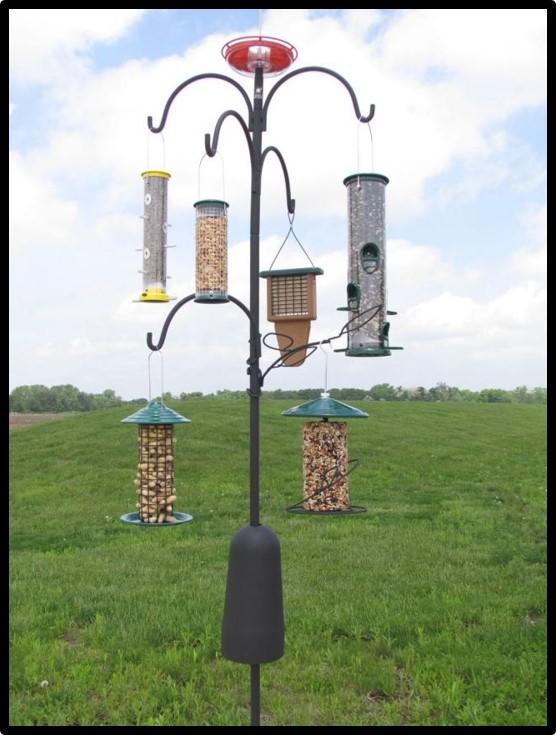Why Aren't the Birds Eating at My Feeder?
Whether you have a new feeder or a well-established one, if the birds aren’t showing up, you may wonder why. Here are the most common reasons:

1. The seed is no longer fresh or has gotten wet. Exposed to sun and humidity, seed is good in a feeder for only 1-2 weeks. If rain has gotten into the feeder, seed will spoil in just days. Much
like we humans are reluctant to revisit a restaurant where we’ve had a bad experience, the birds will also avoid a “bad” feeder. Until the birds are eating again, place only a small amount of seed in the feeder and change it regularly so that it is still fresh when they give it another try.
2. The feeder is new or has been left empty for a while. Birds locate food purely by sight, so while birds may notice the food right away, it could still take them 3-4 weeks to eat from a new feeder. Possibly twice that long for a specialty feeder (suet, peanut, etc.). Birds can be wary of new objects, so even a shiny new feeder replacing an old one may require an adjustment period.
3. Patience is needed in some habitats. While birds can be attracted nearly everywhere, a new feeder in woodlands will be noticed faster than one in a new subdivision or in the middle of farmland void of large trees.
4. Seed is stored improperly. As with human foods, excessive heat and humidity will spoil seeds. Buy no more than you can use
in about 4-6 weeks. WBU gets a fresh seed shipment each week, so you know it's fresh when you buy it.
5. The feeder is dirty. A dirty feeder can harbor mold and bacterial, which is unhealthy for birds and will make new seed spoil faster. Wash feeders at least once a month.
6. The wrong seed is being used. The wrong feeder/seed combination can lead to poor results. Ask the experts at WBU to help you choose.
Note: WBU seed blends never contain junk grains like those found in discount store blends (milo, corn, wheat, etc.). Songbirds tend to avoid these fillers so once they've picked out the few good seeds in it, they may not come back.
7. Predators! A hawk lurking around will make birds scarce. As hunting becomes more difficult, hawks tend to move on. After a while, the songbirds usually return. Outdoor cats are also an issue as they are responsible for over 1 million bird deaths a year. Ask WBU for additional advice.
8. Feeders are located too close together. Some feeders styles can be grouped together, while some specialty feeders, such as finch feeders, work best when 10 feet or more from other birds.
9. Natural cycles. Birds visit feeders all year long, but activity will be highest during migratory and nesting seasons. In the fall, bird activity quiets down a bit as natural food sources are abundant thanks to the summer rains (example: jays and woodpeckers feast on autumn acorns).
10. Feeders are Broken/Defective/Wrong Style. Poorly designed feeders, or those in disrepair, can keep birds away. Make sure your feeders are in good working order and that the food is easy for the birds to retrieve from them.
Thankfully, if one or more of these reasons apply to your feeders, the remedy is usually pretty simple and you should have birds returning soon enough. Please stop by and see us at Wild Birds Unlimited for more detailed assistance or to pick up a bag of fresh birdseed.

